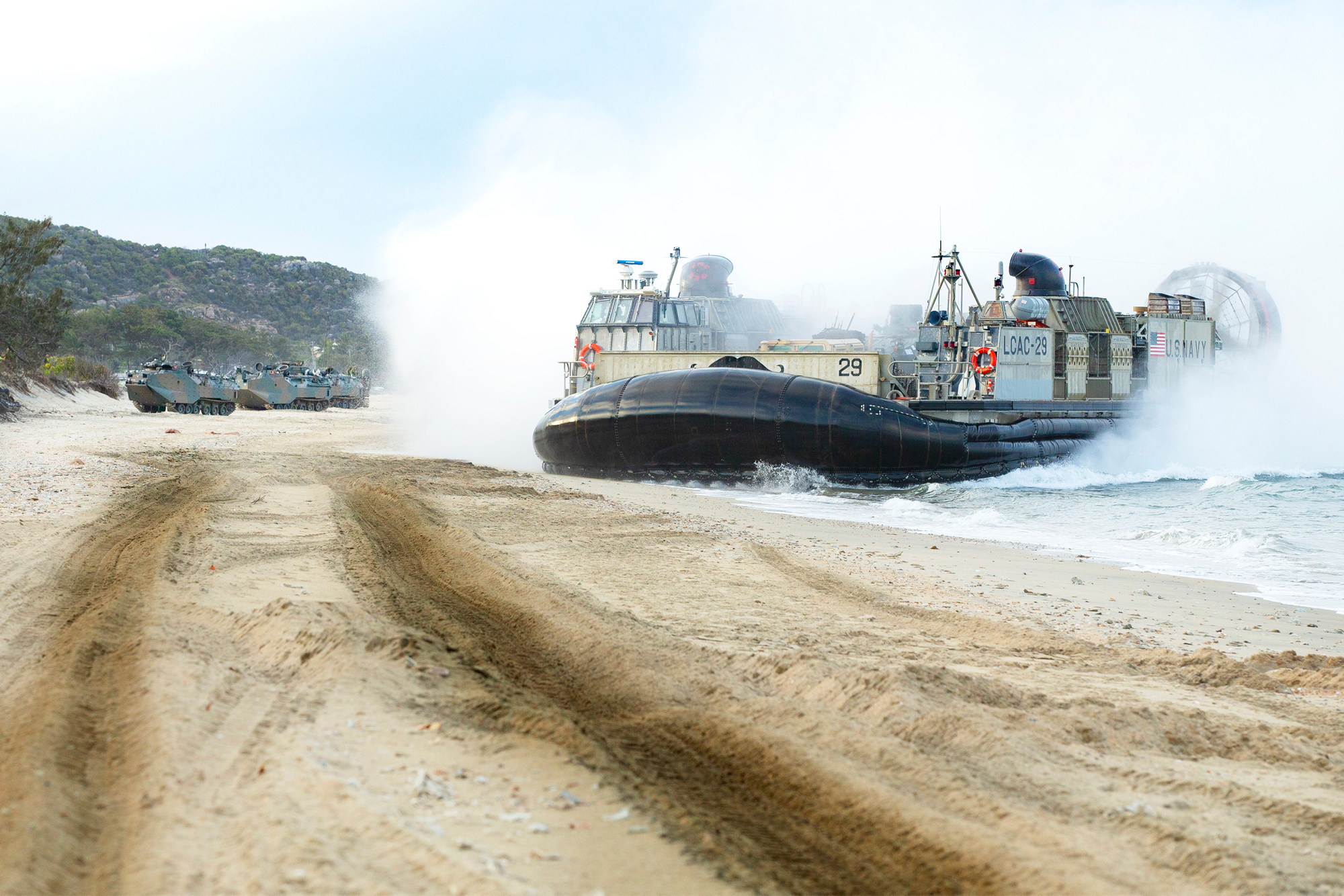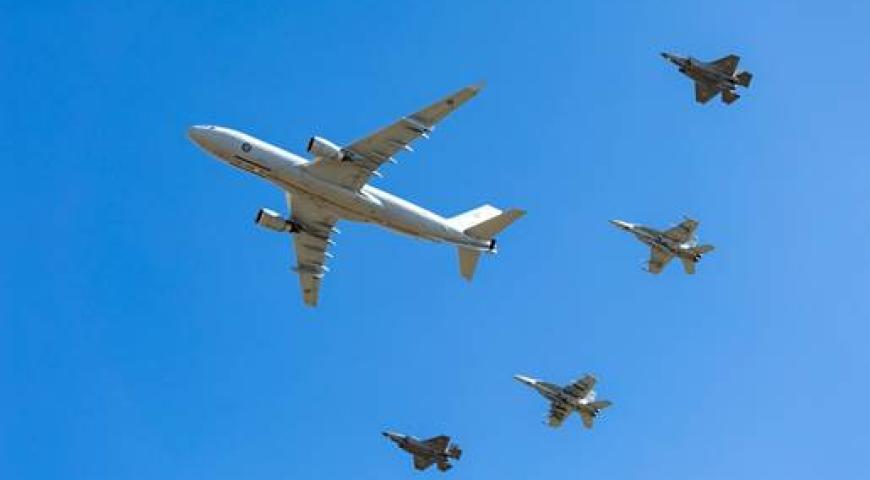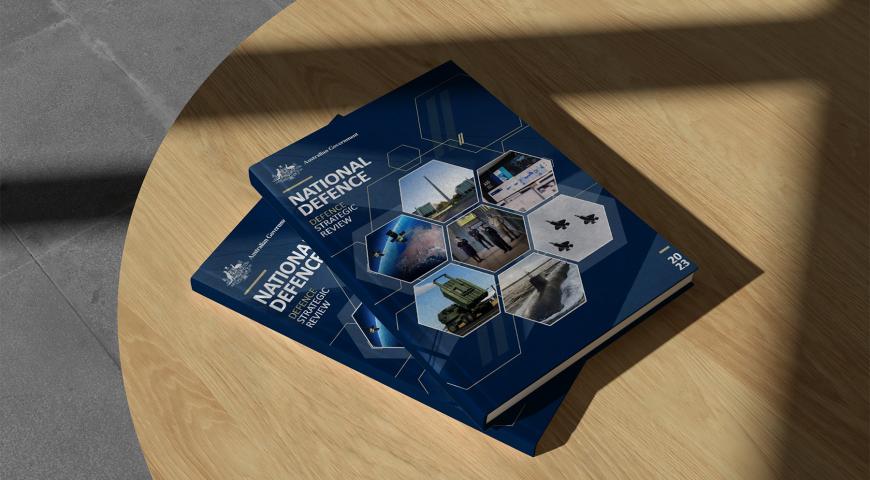Introduction
I recently attended a US Naval War College Maritime Component Commander Flag Officer course in Bahrain in preparation for a future Commander Task Force role. The overall purpose of the course was to “improve the effectiveness of senior leaders who routinely function at the operational level of command and control” and while this was the focus, another important objective was to develop relationships and coalition friendships. 1 Certainly coalition building was obvious from the course attendees, with 23 officers from 13 nations. The thoughts and experiences of this diverse group added significantly to the professional discussions during the course, an aspect I found very rewarding. However, the course also made me question, can we do more in the Australian Defence Force (ADF) to prepare and develop a coalition in our sphere of influence?
Certainly the ADF is no stranger to coalition operations. For decades we have been involved in numerous operations and exercises with many coalition partners. One example is the 2018 Exercise KAKADU, which had a heavy coalition focus involving over 3,000 personnel and observers from 27 nations and aimed at building security and humanitarian partnerships across the Indo-Pacific region. This was a successful exercise yet the lessons we have learned from these activities tells us that military operations with coalition partners is extremely difficult and these tasks will not get easier as we are faced with more complex challenges and environments.
The aim of this paper is to provide insights into why preparing and developing a coalition environment is important for the ADF; what are the challenges that a coalition presents; and offer some recommendations on how the ADF might better prepare for the multilateral operations. Therefore I argue that there are three key areas that the ADF needs to focus on to build a strong basis for coalition building. First, the ADF needs to look at ways to mitigate command and control issues; second, evaluate the challenges of working cross culturally and what can be done to improve cultural coalition building, and finally the ADF needs to examine planning within a coalition force.
Why the Coalition
Coalitions and alliances have been a part of most wars and military operations for centuries and it appears that they will continue be an enduring part of our (and our allies) security environments into the future. Indeed, coalition operations will most likely be the dominant form of employment of the ADF. Many nations make specific mention of coalition operations in their strategic defence policies despite the fact that past experiences highlight the difficulties of such operations. The 2016 Australian Defence White Paper outlines the ADF will “work closely with our ally the US and other international partners to play an important role in coalition operations wherever Australia’s interests are engaged. 2 The 2015 UK National Security Strategy and Strategic Defence and Security Review devotes a chapter to working with allies and partners stating “we will invest more in our relationships with our traditional allies and partners and build stronger partnerships around the world”. 3 So why this focus on coalition development and what are the advantages it offers?
History would suggest that coalitions have been formed when the members have shared interests or objectives (unity of purpose) however, the advantages provided by the coalition formation may be quite unique for each nation or specific to the circumstances of the operation. For example, Britain and Russia arguably determined that aggregation of several nations’ forces (advantage) was necessary for the defeat of Napoleon (common objective) in the Napoleonic wars. 4 While aggregation of forces could still be seen as an advantage (especially for smaller Defence Forces like Australia), in more recent coalitions, this aspect has not been a major consideration for coalition formation. To illustrate, the US has the capability to conduct most military operations independent of allies and coalition partners, yet in most cases chooses to operate through a coalition.
More common themes for coalition formation include increased International legitimacy, improved chances of both international and national support and improved deterrence. There is a further advantage which I believe is particularly relevant to Australia and the ADF and that is leverage of coalition member capabilities. This can involve many aspects including overflight, basing, knowledge of area, language, cultural expertise and niche capabilities (such as mine counter measures). For example, when operating in a complex environment such as the South China Sea, utilizing particular coalition member’s specific capabilities may be better suited to conduct a task due to local knowledge, cultural sensitivities or simply more flexible, national rules of engagement.
Coalition Challenges
While there is no doubt that coalition operations can offer advantages, the challenges of planning and executing operations with coalition forces are significant and can be seen as outweighing the advantages offered. Winston Churchill once stated that “there is at least one thing worse than fighting with Allies and that is fighting without them” 5 which indicates challenges have been an enduring nature of coalitions. Reviewing activity reports from past coalition operations would no doubt produce a long list of challenges, many related to equipment interoperability issues, logistics etc. In the interest of brevity I will concentrate on three challenges that cause significant frustration and which I have personally experienced. First, command and control concerns; second cross cultural understanding and finally planning issues across complex environments and platforms.
Although nations will often participate in coalition operations, they rarely, if ever relinquish national command of their forces. This means that there will always be at least two distinct chains of command, a national chain and multinational. The challenge is to build a command and control structure that suits the mission needs but is within the respective member political constraints that allows for the optimization of contributing nation capabilities and authorities. Structures developed to meet these needs are often unwieldy leading to ambiguous and uncertain chains of command as well as negative impacts on timeliness of decision making and unity of effort. The larger and more diverse the coalition the greater the challenge. An example is the Combined Maritime Force (CMF) multinational coalition operating in the Middle East which conducts Maritime Security Operations. The CMF has 33 member nations and includes three Combined Task Forces (all commanded by a different nation) with overall Command conducted by a US Navy Vice Admiral who also serves as the US Navy Central Command and Commander US Navy Fifth Fleet. 6
Cultural differences between coalition partners can be significant and while there may be a political will, coalition military objectives may not be achieved due to cultural frictions. Understanding of culture involves many aspects, history, language, ideologies, nationalisms and ambitions just to name a few. As an example, the complexities of the Middle East are rooted in the arrangements, unities, and divisions imposed by the Allies after the First World War 7 and this is one reason why coalitions are always challenging in this region. Saddam Hussein tried to exploit this to his advantage in the first Gulf War with attempts to force Israel into the war with Scud missile attacks which, had he been successful, could have broken the Arab coalition with US Forces.
Moreover, language barriers can impact in many areas; planning, transmission and understanding of orders and simple participation. Other aspects such as cultural attitudes to timeliness and the appetite for risk can impact on the coalition unity of effort. What may appear to be a relatively minor issue, if not understood, can quickly lead to frustration and mistrust within the coalition. Understanding of these issues at all levels but particularly among coalition senior leadership to work through cultural differences is important to ensure coalition cohesion.
General Dwight D. Eisenhower said, “In preparing for battle I have always found that plans are useless, but planning is indispensable”. 8 Eisenhower’s message is that planning forces one to develop a detailed understanding of the context within which operations are conducted and the Courses of Action (COA) with the greatest potential for success. Further, once embarked on a plan and as the context changes, you are better able to make good decisions. Military planning and understanding the context can be difficult and confusing for many in the ADF. Add the complexity of planning in a coalition environment and the challenges multiply, especially when the additional coalition complexities need to be considered (such as the Command and Control arrangements and the cultural considerations mentioned above). For example, the development of a rules of engagement matrix for a unilateral force is relatively simple. The task is far more complex within a coalition force of four countries when national political constraints, capabilities and authorities need to be considered.
These planning challenges are often mitigated by integrating coalition members into planning teams in the form of liaison officers or dedicated planning positions. While diversity in a planning group can provide a significant advantage and add to the plan, this advantage will only be realized if members contribute their experience and creative thinking. Unfortunately, and all too frequently, coalition members within a planning group (especially if it is dominated by a particular country) are unfamiliar with the planning process that is being adopted and will feel uncomfortable in making their contribution, which can lead to critical planning information being missed (further exacerbated by national security limitations). Cultural issues such as language barriers will also come into play here as well as the difficulty in understanding the specific “planning language” and acronyms (particularly relevant in the ADF). These issues can create stovepipes within the planning team leading to erosion of trust and the development of a plan that does not have a shared ownership within the coalition force.
Can the ADF Do More?
Noting the challenges that I have identified above, what are some of the areas where the ADF can do more to prepare for working with coalition partners. As I have mentioned earlier there is already a strong focus on joint, multinational exercises and training and I don’t believe adding additional activities would be necessarily achievable (noting the already high operational tempo) or add greatly to overall preparation. However, there are three key areas where I believe there should be additional focus and these specifically address the challenges that I identified.
Command and control arrangements will always be complex in a coalition force. Key to working through these issues will be the establishment and maintenance of trust between the Commanders of the coalition force which will be associated with personalities and personal relationships of and between the leaders. As Riley pointed out in his book Lessons in Coalition Warfighting – “the personal qualities of the field commander may well be the major factor in determining the success or failure of a coalition force at the operational level”. 9 The relationships I established on the Flag Officer course will be invaluable in my next role as a Commander of a Combined Task Force, particularly as a number of officers from my class will be in other regional Command appointments. However, the ADF does not have a similar international course and while important international relationships are developed on other courses, such as the Defence and Strategic Studies Course, these are not focused at the operational level. An International Task Force Course, aimed at the Colonel ( E ) and one star level, should be developed and offered for delivery to regional militaries (potential coalition partners). The course could be based on the current ADF Commander Joint Task Force course and delivered through the Australian Defence College (ADC) by selected, retired ADF and International star ranked officers. This would provide a ‘pool’ of potential coalition commanders better prepared and able to comprehend and patiently work through coalition challenges and cultural differences.
The ADF requires a dedicated organization to deliver cultural training to a variety of personnel. Understanding the cultures of regional and other nations that the ADF routinely operates with is critical and an enhanced cultural capability is discussed in the Defence White Paper and a recent 2019 Strategic Policy Statement. 10 However, the ADF conducts limited cultural training, normally provided as part of pre-deployment preparation or cultural understanding obtained by ADF personnel if they conduct language training through the school of languages. This centre for Defence cultural capability could again be resident within the ADC (provided additional resources were allocated) and provide training to build and adapt cultural knowledge, strategies for dealing with cultural differences and adapting behaviour to foreign cultures. This capability would provide invaluable preparation for coalition operations, especially for those personnel in key leadership positions.
The ADF has a robust, joint planning process centred around the Joint Military Appreciation Process (JMAP). However, even ADF personnel can feel ‘intimidated’ by the process and associated language especially if they have had only limited exposure to the JMAP or have not been part of a Joint Planning Team. ADF coalition partners could have similar concerns. While the ADF does ‘export’ planning courses to international partners there is no long term, coordinated plan. An International JMAP course/s should be developed that is flexible in delivery, through courses conducted in Australia, international mobile training teams or on-line versions. Familiarity with the planning process would make coalition members feel more comfortable in contributing and also enhance the opportunities for the sharing of key planning information. Provided the ADF Warfare Training Centre was sufficiently resourced these courses could again be resident within the ADC.
Conclusion
Coalition operations have been, and will most likely continue to be, the dominant form of employment of the ADF. Yet these operations are extremely hard and to improve the opportunities for success they require careful development and preparation at all levels. The ADF already conducts a range of multinational exercises which have a focus on coalition development however there are other areas, outside of exercises and improving technology interoperability, where more can be done. Reducing the complexity of command and control, addressing cultural frictions and improving planning across complex environments and platforms are three such areas.
Complex command and control arrangements will always be a fact of life in coalition environments, primarily due to national caveats. However, key to coalition cohesion will be the establishment and maintenance of trust between the Commanders of the coalition force. The development and implementation of an International Task Force Course, aimed at the Colonel ( E ) and one star level would be a valuable tool to develop a pool of coalition commanders and facilitate the early development of relationships and trust, key to working through command and control challenges in future coalitions. Similarly a dedicated organization to deliver cultural training across a variety of personnel is necessary to adapt behaviour to foreign cultures, mitigating cultural frictions between coalition partners. Finally, implementing a long term plan for the delivery of an international JMAP course to potential coalition partners will improve the understanding of the planning process making it more likely that coalition members will contribute to the planning process and the developed plan will have shared ownership within the coalition force. While these measures will not make coalition operations easy, they will enhance the unity of effort and at least ensure some of the frustrations are directed at an adversary and not between coalition members.
About the Author: Captain Leggatt is currently the Commandant of the ADF Training Centre. Other Command appointments include the Frigate HMAS Canberra, HMAS Watson and Training Authority Maritime Warfare and the Australian Amphibious Task Group. He has served as the Defence Attaché Southern Europe (based in Madrid) and is a Spanish linguist. In September 2019 he will be promoted to Commodore and later in the year assume Command of Combined Task Force 150 as part of the multinational Combined Maritime Forces in Bahrain.
1 VADM Malloy Commander US Fifth Fleet – Joining Letter 24 Mar 19.
2 Department of Defence , Defence White Paper, Commonwealth of Australia, p.18.
3 Her Majesty’s Government, UK National Security Strategy and Strategic Defence and Security Review, p 47.
4 Riley J.P. Napoleon and the World War of 1813: Lessons in Coalition Warfighting
6 www.combinedmaritimeforces.com
7 Fromkin, David, A Peace to End All Peace. The Fall of the Ottoman Empire and the Creation of the Modern Middle East, Henry Holt and Company, LLC.
8 Dwight D. Eisenhower, Crusade in Europe, The Johns Hopkins University Press.
9 Riley J.P. Napoleon and the World War of 1813: Lessons in Coalition warfighting, p.443.
10 Strategic Policy Statement, Foreign Language and Cultural Capability, Department of Defence, January 2019.
Defence Mastery
Technical Mastery
Please let us know if you have discovered an issue with the content on this page.
Comments
Start the conversation by sharing your thoughts! Please login to comment. If you don't yet have an account registration is quick and easy.




